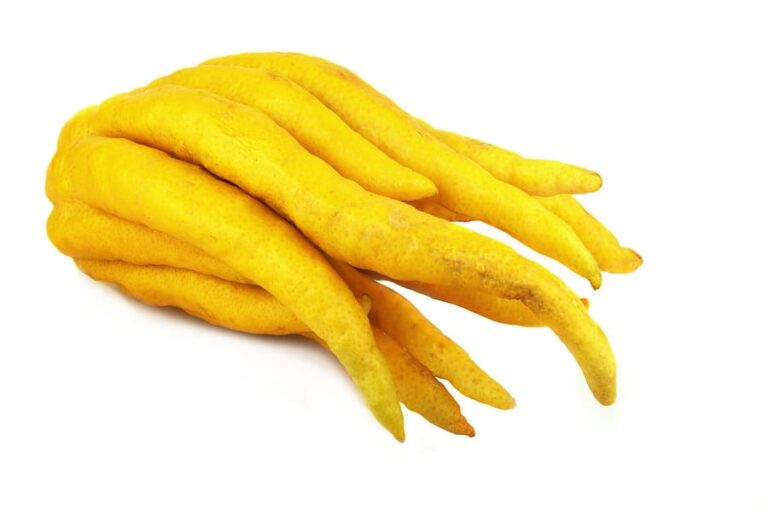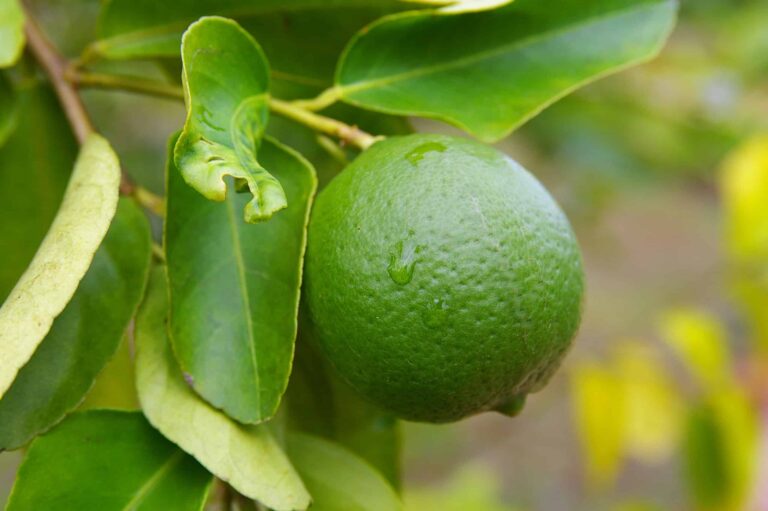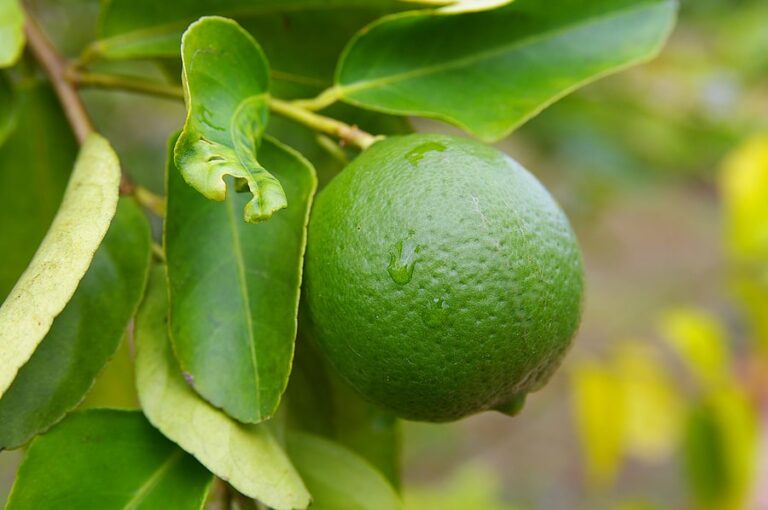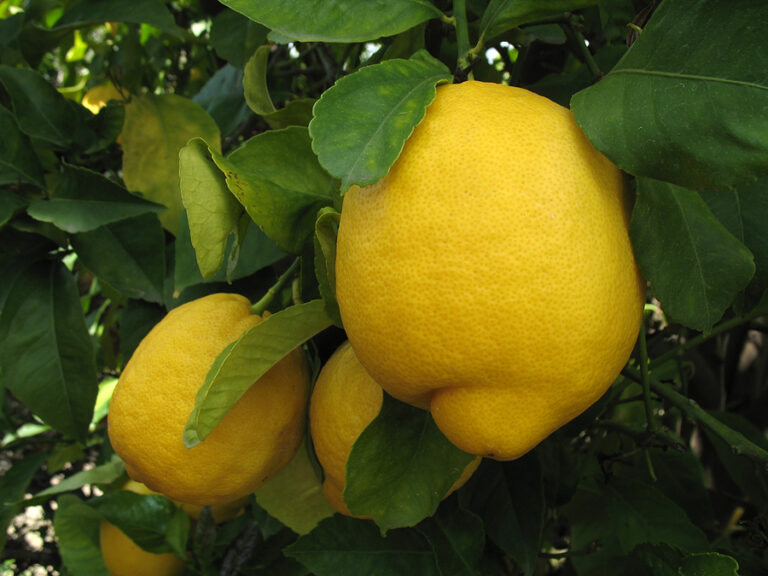Citrus Planting, Growing, Pruning Tips – Harvest to Table
Citrus—oranges, lemons, limes, grapefruits, and kumquats—thrive outdoors where summers are warm and winters are mild.
But citrus is not only for warm climates. Citrus fruits can be grown in cool regions in pots or planters that can sit outdoors in warm weather and be moved indoors in cool weather.
Citrus fruits take months to ripen—six months or more on average, some more than a year. The accumulated heat of summer and winter cold are important factors when selecting and planting citrus.
Related articles:
- Ways to Serve Oranges
- Ways to Serve Mandarin Orange
- Ways to Serve Lemons
- Ways to Serve Grapefruit
- Ways to Use Limes
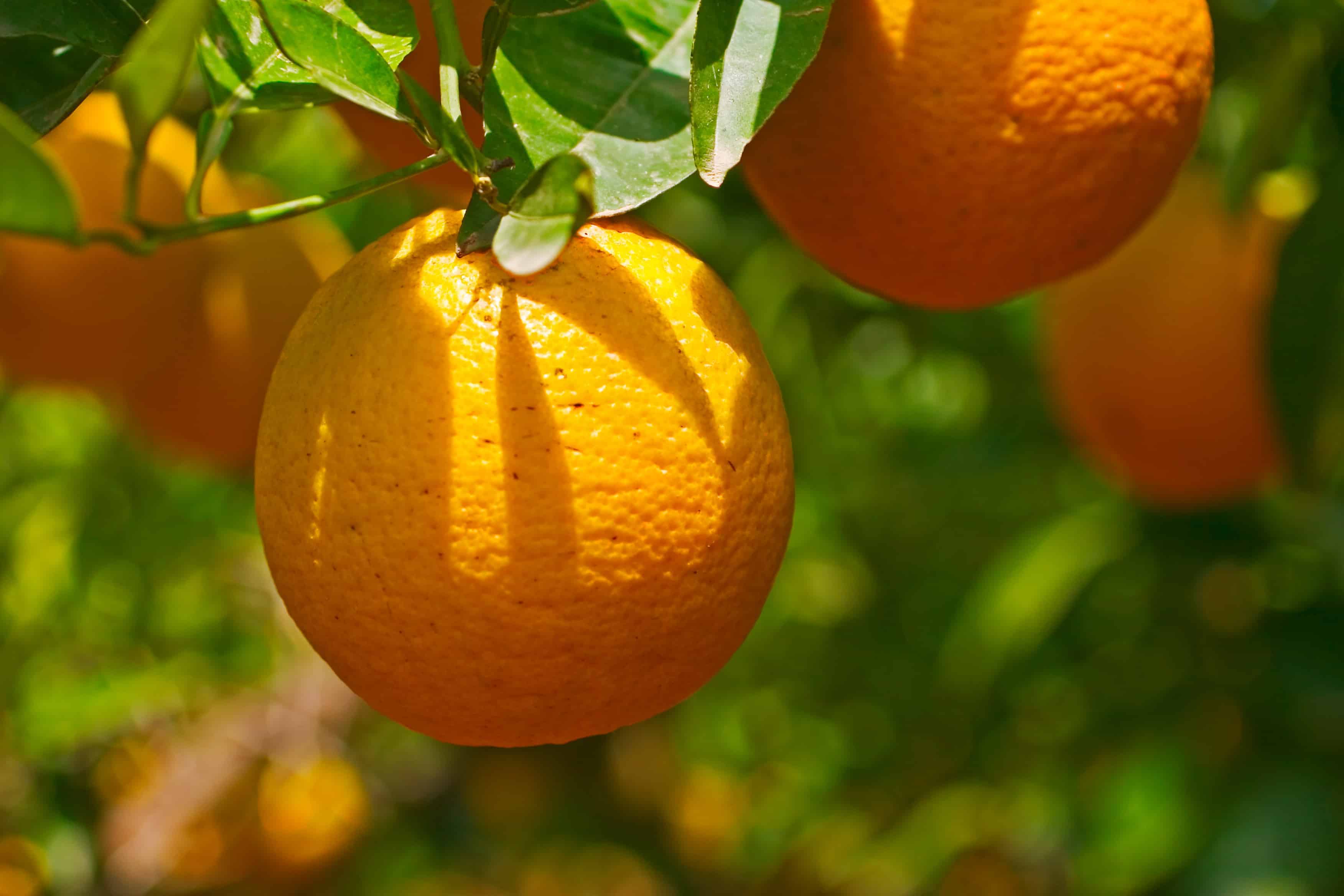
Lemons and limes are the most tender, then grapefruit, then oranges and mandarins; kumquats are the most cold-tolerant of citrus. Contact the nearby Cooperative Extension Service or garden center for citrus that will grow and ripen fruit in your area.
Citrus care—feeding, watering, and pruning—is relatively easy once you choose the right plant.
Here is your complete guide to growing citrus.
Best climate and site for growing citrus
- Citrus fruits must accumulate heat to ripen; only heat can produce truly ripe fruit. When it comes to citrus, ripeness means sweetness.
- Citrus requires mild winter temperatures and very warm summer temperatures. Citrus grows outdoors and ripeness best from the southern part of Zone 8 to Zone 10.
- While some citrus can survive freezing temperatures and lower, all citrus grow best where year-round temperatures rarely drop below 60°F and the average temperature is in the mid to high 70sF.
- Plant citrus in full sun; in very hot and dry summer regions give citrus overhead shade in the afternoon.
- Plant citrus in well-drained, light loamy soil that is slightly acidic. A soil pH of 6.0 to 7.0 is ideal.
- Avoid planting citrus in areas prone to strong winds that can tear branches and leaves. Avoid planting citrus in low spots where frost or cold air can settle.
- A protected, sunny spot on a gentle south-facing slope is ideal for growing citrus.
- Avoid planting citrus in the soil where citrus has grown before.
Citrus and temperature
- Citrus ripening periods vary with the climate. In general, the hotter the climate the earlier a citrus fruit will be ready to harvest. Fruit in cool regions will ripen later than fruit in warm regions. All citrus flower and produce fruit earlier in warmer climates. Winter cold and accumulated heat are important factors.
- Most citrus fruits require seven months or more of warm temperatures to ripen. Optimal growing and fruit ripening temperatures for citrus are in the mid to upper 70s°
- Citrus growth is reduced at 55° Most citrus can withstand temperatures greater than 100°F.
- Different types of citrus have varying degrees of cold hardiness. The following citrus species are listed in order of increasing foliage hardiness from most tender to most hardy: citron, lime, lemon, grapefruit and pummelo, sweet orange, sour orange, mandarin, and kumquat. Tangelo and tangor hybrids rank about equal to sweet orange in hardiness. ‘Meyer’ lemon, ‘Rangpur’ lime, calamondin, Satsuma mandarin, and kumquat hybrids rank between mandarin and kumquat.
- The fruit of all citrus is usually less hardy than the foliage. Nearly all citrus fruit is damaged between 26° and 28°F; grapefruit has more cold resistance; mandarin is more frost resistant. The foliage of the kumquat will tolerate temperatures as low as 18° Foliage of citron and Mexican lime are usually damaged by 32°F.
- Lemons are an acid fruit and don’t need to sweeten up; they are suited for cool regions.
- Grapefruits have a high heat requirement. Grapefruits need a long hot summer to get sweet and develop color in red or pink-fleshed fruit.
- Citrus flavor and sweetness increase as fruit remains on the tree.
Choosing citrus and protecting citrus from cold
- Choose citrus that will thrive where you live. Contact the nearby Cooperative Extension Service for recommendations on citrus that will grow in your area.
- Check the cold hardiness of the variety you want to grow to be sure it will grow in your garden. Plant the hardiest citrus. The rootstock on which a variety is grafted can influence its hardiness; for example, the trifoliate orange rootstock can increase hardiness.
- Choose early ripening varieties that can be harvested before damaging frost.
- Select virus-disease-free citrus trees.
- Choose a tree with deep green leaves, a straight trunk, and clean bark.
- Choose a tree that is at least one year past grafting and budding. Look for the main trunk to be 1 inch above the bud union and the trunk to be ¾ to 1 ¼ inch in diameter depending on maturity.
- Plant citrus in the warmest part of your garden; make the most of the microclimate in the garden. Plant citrus near a south-facing wall that will absorb solar heat during the day and radiate heat on cold nights.
- Protect citrus trees from frost; put heavy plant blankets or heating devices in place if frost threatens. if a tree freezes it will die
- Time of fertilizing can affect cold resistance; don’t feed citrus past midsummer; late summer growth will be tender and susceptible to cold damage.
- Plant in containers and move trees indoors or to a protected place in winter
- Citrus responds to sudden changes in temperature by dropping leaves; if your citrus drops its leaves in winter it can regrow new leaves in spring and produce fruit the following year.

Citrus pollination and flowering
- Nearly all citrus trees are self-fertile; commonly only one tree is needed to produce fruit. Check cultivar descriptions for exceptions.
- Citrus trees commonly flower in spring, but blossoms can appear at any time of the year if conditions are warm enough and the tree is not dormant.
- Once the fruit sets it takes a long time to ripen—a minimum of about 6 to 7 months (grapefruits about 18 months). Citrus trees can have fruit and blossoms on the tree at the same time.
Spacing citrus
- Consider the space you have for growing citrus. A full-size orange or lemon tree can grow to 20 feet tall and wide or more. A full-size grapefruit tree can grow to 30 or 40 feet tall and wide. If space is limited, choose a tree that is grafted onto dwarfing rootstock.
- Space large trees 25 feet apart.
- Space dwarf trees 10 feet apart.
Planting citrus
- Citrus can be purchased container-grown or balled-and-burlapped.
- Spring is a good time to plant citrus; plant before hot, dry weather comes, or wait and plant later in fall.
- Prepare a planting site in full sun that is sheltered from a prevailing breeze or wind.
- Work well-rotted compost or manure into the soil and add a cupful of all-purpose fertilizer to the bottom of the hole.
- Dig a hole half again as deep and twice as wide as the tree’s roots.
- Put a tree stake (or support wires for a fan) in place before planting. Drive the stake into the ground to the side of the hole to at least 2 feet deep.
- Set the tree in the hole so that the soil mark on the stem is at the surface level of the surrounding soil. (Remove all twine and burlap from balled-and-burlapped trees.) Spread the roots out in all directions.
- Re-fill the hole with half native soil and half aged compost or commercial organic planting mix; firm in the soil so that there are no air pockets among the roots. Water in the soil and create a modest soil basin around the trunk to hold water at watering time.
- Secure the tree to the stake with tree ties.
- After planting, water each tree thoroughly and fertilize it with a high-phosphorus liquid starter fertilizer.
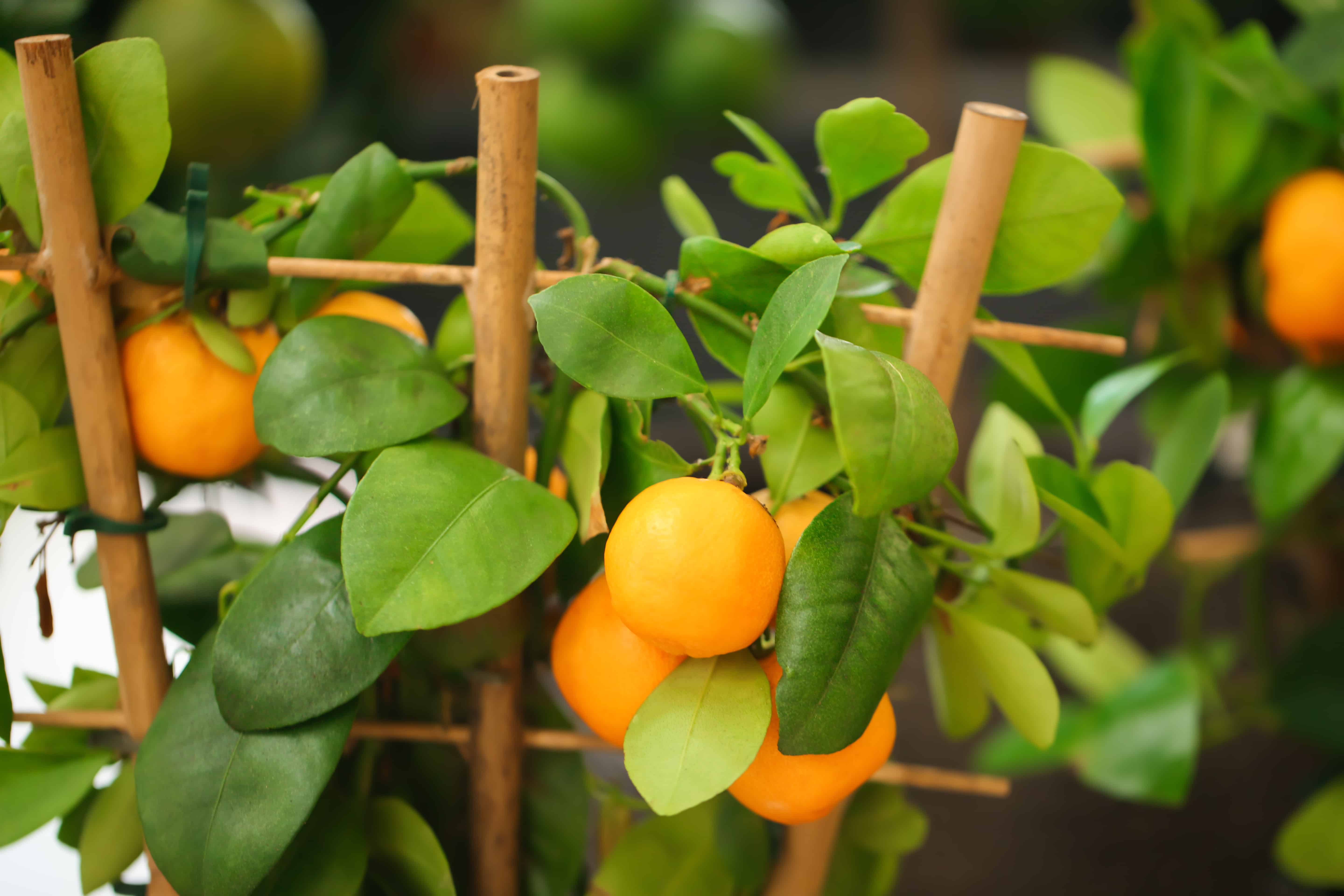
Container growing citrus
- Dwarf citrus is well suited for containers. Dwarf citrus is commonly 40 to 50 percent the size of a standard tree and produces 50 to 60 percent of the fruit of a standard tree.
- Dwarf citrus varies in size proportionate to the standard tree size of the citrus; standard citrus trees that grow 18 to 20 feet in height will grow 8 to 12 feet high on dwarf rootstock; standard citrus trees that grow 8 to 12 feet high will grow 3 to 6 feet high on dwarf rootstock.
- Plant dwarf citrus in a 5-gallon container or larger. Plant in well-drained potting soil. Repot container-grown trees every two years or sooner if necessary.
- Keep the soil evenly moist. Let the soil almost dry out between watering.
- Lightly fertilize citrus in containers once a month; citrus grown in containers require more frequent feeding than citrus growing in the garden.
- Protect plants from frost or bring them indoors in winter.
Citrus care, feeding, and watering
- Keep the soil evenly moist to prevent fruit drop. Water citrus regularly in spring and summer to avoid flower or fruit drop.
- Mulch with compost or aged manure several times during the year to retrain soil moisture and keep down weed growth.
- Fertilize citrus to encourage good tree vigor. Give mature citrus 1 to 1½ pounds of nitrogen each year. Apply nitrogen 3 or 4 times a year; first in mid to late winter; make additional applications every 6 to 8 weeks until the end of summer. Test the soil if trees are growing poorly.
- Don’t apply nitrogen around citrus in autumn; it can result in tender growth sensitive to frost. Allow growth to harden off prior to winter.
- If leaves are yellow with dark green veins after nitrogen is added then apply minor nutrients such as iron, zinc, and manganese.
- If frost is predicted cover the plant with a large row cover or clear plastic sheeting. Make a mini-greenhouse by setting a wooden framework around the plant then cover it with clear plastic. You can also place a string of lights inside the frame to keep the tree warm.
- Paint the trunk with white latex paint diluted with equal parts water to prevent sunburn.
Training citrus
Citrus trees can be trained to a high branching structure–with the lowest branches several feet above the ground. But citrus branches can be allowed to “skirt” the tree–that is hanging almost to the ground. The fruit on skirted trees is easier to reach–and weed growth is controlled. Full-skirted trees are less susceptible to bark and fruit sunburn which is important in hot and dry regions.
Orange and grapefruit trees require very little pruning; their twiggy growth will fill out into a full, rounded shape. Lemon and lime trees have an upright growing habit; vigorous lemon growth may require pinching or heading pack to keep a pleasing shape.
Thinning and heading back will result in the loss of some crops. Shaping is best done early in the tree’s life–when the tree is smaller and pruning is easier; this will allow for heavier fruit yield in later years.
- At planting time: A young citrus tree will have a single main stem; cut the stem back to about 2 feet tall; make the cut just above a leaf; pinch out any shoots sprouting from the rootstock below the graft union.
- Next season: Choose 3 or 4 strong lateral branches; prune them back to about 12 inches extending from the main stem; pinch out new shoots growing on the main stems below the laterals.
- Following seasons: Cut the laterals back by one-third of new growth each year; also, cut back new sub-laterals by one-third of new growth; open crowded growth in the center; pinch off new shoots growing from the main stem or suckers growing from the roots.
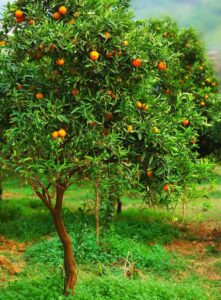
Pruning and thinning citrus
Citrus trees are largely self-shaping, requiring little pruning. Occasional pruning to shape leggy branches or to give a citrus tree the desired shape can be done any time of the year except winter.
Pinch back tips of new growth to help round out citrus trees. Cut back erratic new growth or trunk suckers not wanted above the graft union. Head back upright growth to limit the size of a citrus tree.
Mature citrus trees can be pruned to remove dead, diseased, or broken branches. Prune also to admit light to the fruit–but only if the branching and leaf cover is excessive.
Citrus trees store their food in their leaves; the amount of foliage on a tree is directly related to the amount of fruit the tree will produce.
The best citrus pruning practice is to remove unwanted growth while it is still small. Pruning early in a tree’s life will make pruning of mature trees almost unnecessary.
- Citrus trees commonly do not need pruning apart from removing branches and foliage that are damaged or diseased.
- Prune to keep the center of the tree open to sunlight and air circulation. Tip prune main branches and young branches when they become too long.
- Remove upright-growing sprouts and suckers that emerge from branches or the roots.
- Wear gloves when pruning to protect against thorns.
- Most freestanding citrus trees do not need thinning. However, do not let fruit weigh down branches to the point they may break.
Pruning established citrus trees
Established and neglected citrus trees can be pruned to restore shape. Remove dead, damaged, or diseased wood first. If extensive pruning is required, prune the tree so that the main scaffold branches remain. Newly exposed bark–the trunk and interior branching–should be protected from sunburn by the application of indoor latex white paint or protective paper or cloth wraps. Citrus bark is thin and easily damaged by sun exposure; sunburned bark will become hard and brittle and may peel.
Cold weather damage to citrus
Foliage and branching damaged by frost or freezing weather should not be thinned or pruned away until new growth begins and the damaged area is clearly defined. Minor frost damage includes yellow, droopy, and wilted leaves. Leaves that have been frozen will shrivel and drop from the tree; they may remain on the tree for several weeks without drying or turning color before dropping. Allow new growth to begin before pruning away frost or freeze damage; do not prune until the threat of frost is past. Remove damaged fruit immediately after a freeze.
Citrus trees damaged by frost or freezing weather may require major pruning or removal. Do not begin this process until the extent of the dieback is clear; this could be several weeks or months after the freeze.
Citrus that has been heavily pruned should be only lightly fertilized. Keep the ground just moist, but do not overwater freeze damaged or heavily pruned citrus.
Many citrus trees have thorns. Use heavy gloves, goggles, and pruners suited for the size of the tree and branches you are pruning.
Propagating citrus
- Citrus can be propagated by seeds, bud grafting, and cuttings. Growing from seed takes a long time.
- To propagate citrus from a from cutting, take a 3 to 6-inch cutting from mature terminal growth in early summer, remove the basal leaves, then set the cuttings in a rooting medium.
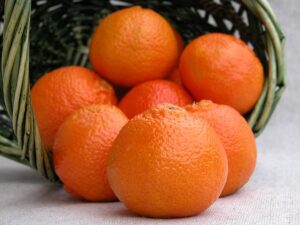
Harvesting and storing citrus
- Citrus trees produce fruit 3 or 4 years after planting
- The best way to tell if citrus is ripe is to pick one and taste it; color alone is not a judge of ripeness.
- Harvest citrus with a pruning shear; leave some of the stems attached when you remove the fruit from the branch.
- Ripe fruit can remain on the tree for weeks and even months without losing quality; the exception is mandarin oranges.
- Store citrus fruit in the refrigerator for up to two weeks.
Citrus harvest calendar
Here is a citrus harvest calendar for the Northern Hemisphere. Pick:
- Algerian tangerines and tangelos between November and January.
- Sweet oranges between December and March.
- Navel oranges between November and February.
- Valencia oranges between March and May.
- Grapefruit between December and June.
- Lemons between September and April.
- Bearss limes between August and December.
- Mexican limes in September and October.
Citrus problems and control
- Plant virus-free, disease-free plants and provide good growing conditions to minimize problems. Proper watering and feeding will minimize pest and disease attacks.
- Watch for scale, small hard-shelled insects, on leaves and stems. Scale can be smothered with horticultural oil.
- Whiteflies (small whiteflies on the leaf undersides) suck juices from leaves; control whiteflies with insecticidal soap or horticultural oil.
- Thrips are tiny sap-sucking insects that can cause leaves to become yellow and stippled. Smother thrips with horticultural oil.
- Leafminers are fly larvae that tunnel in leaves; remove leaves with zig-zag tunnels to be rid of the larvae; dispose of the leaves in the trash.
- Use beneficial insects, traps, and insecticidal soap to prevent and control pests.
Fall and winter citrus care
- Citrus growing indoors in winter will need plenty of light; place plants in a greenhouse or sunroom.
- Growing citrus indoors, keep the temperature no higher than 60F; keep the air humid by misting or spraying with water.
Recommended citrus varieties to grow

Oranges
- Cara Cara Navel: Seedless early winter Navel; rich, sweet flavor, salmon-colored flesh.
- Washington Navel: winter-ripening; sweet, seedless fruit; moderately juicy; easy to peel.
- Lane Late Navel: rich flavor; spring ripening; stay sweet and juicy through the summer.
- Trovita: excellent flavor; pleasantly sweet and juicy; few seeds; spring ripening.
- Valencia: sweet flavor; abundant juice; summer-ripening; fruit hold on the tree to autumn.
- Moro (blood orange): tart berry-like flavor; distinct aroma; purple-red flesh; productive in spring.
- Sanquinelli (blood orange): tart, spicy flavor; blood-red juice; yellow-red rind.
- Skaggs Bonanza: rich and sweet; moderately juicy; small, dense growth habit.
- Robertson Navel: moderately juicy; slow growth; bears fruit at a young age.
- Marrs: sweet with low acid; naturally dwarf tree.
- Seville (sour orange): juicy but very sour; flatter than a sweet orange.
- Bouquet (sour orange): juicy and sour.
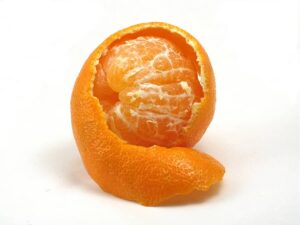
Mandarins
- Dancy: rich, sprightly flavor; red-orange fruit; easy to peel; ripens late winter.
- Owari Satsuma: mild, sweet flavor, juicy; seedless fruit; ripens early winter; hardiest of mandarins.
- Clementine (Algerian): sweet and juicy fruit; ripens after Satsuma; hold well on the tree.
- Murcott (Afourer): great flavor; easy to peel; ripens in spring.
- Fremont: rich flavor; tender and juicy; bright reddish-orange; ripens in winter.
- Kinnow: rich, aromatic, very juicy; ripens in spring; fruit lasts on the tree for months.
- California Honey: rich, sweet flavor; early spring-ripening fruit.
- Page: rich and sweet; a cross between ‘Minneola’ tangelo and ‘Clementine’.
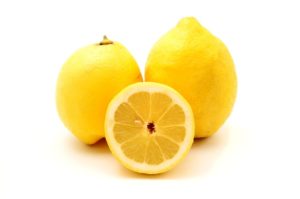
Lemons
- Eureka: classic lemon; highly acidic and juicy; fewer thorns than Lisbon.
- Lisbon: traditional lemon flavor; thorny.
- Ponderosa: acid and juicy; a hybrid of lemon and citron; thick rind.
- Meyer: sweetest lemon and very popular for home gardens; light acidic flavor; prolific and often continuous harvest.
- Variegated Pink Lemon: variegated foliage; fuchsia color bloom; pale pink flesh; the juice is clear.
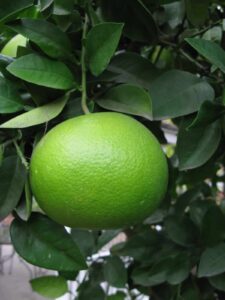
Grapefruit
- Oroblanco: sweet, yellow fruit even in mild climates; intensely fragrant flowers.
- Rio Red: excellent red-fleshed fruit ripens in late winter; more cold hardy than other grapefruits; rind has a pink blush.
- Marsh Seedless: good flavor, juicy; white flesh; parent of Redblush.
- Redblush: good flavor, very juicy; almost identical to Marsh except for red blush flesh and rind.
- Chandler Pummelo: sugar-acid flavor; grapefruit relative; pink flesh; sweetest when grown in hot regions; ripens in winter.
Limes
- Bearss Seedless (also called Bartender’s, Persian, or Tahitian Lime): most popular; acid lime flavor, very juicy; cold hardy.
- Mexican (West Indian, Key Lime): tropical flavor; highly acidic; smaller than Bearss; frost-sensitive.
- Rangpur: tender, juicy and very acid; not a true lime, resembles a mandarin; small red-orange fruit.
- Kieffer (Kaffir, Citrus Hystrix): aromatic leaves; used in Thai cooking and for soups and curry.
- Mexican Sweet Lime: lightly tart.
- Palestine Sweet Lime: mild; turns yellow when ripe.
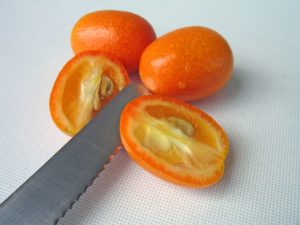
Tangelo—Kumquats—Exotic Citrus
- Minnelola Tangelo: deep reddish-orange fruit; tangerine-like flavor in late spring through summer.
- Orlando Tangelo: mildly sweet; closer to a mandarin and very juicy.
- Temple Tangor: rich and spicy; moderately juicy; a cross between a mandarin and an orange.
- Meiwa Kumquat: sweet, moderately acid, slightly juice, round.
- Nagami Kumquat: rind mild and sweet; scant juice; oblong.
- Calamondin (kumquat hybrid): zesty, acid juice; small orange fruit.
- Eustis Limequat (kumquat hybrid): flavor, the aroma of lime; small oval.
- Buddha Hand (Fingered Citron): highly fragrant; a small amount of pulp.
- Bergamont: oil from the rind is extracted for Early Grey tea; fragrant flowers, sour fruit.
- Yuzu: flavorful juice; used as a garnish.
Also of interest:
Common Oranges: Valencia and Trovita
Related articles:
Planning the Home Fruit Garden
Garden Planning Books at Amazon:
- Vegetable Garden Almanac & Planner
- Kitchen Garden Grower’s Guide Vegetable Encyclopedia
- Vegetable Garden Grower’s Guide
- Tomato Grower’s Answer Book
More fruit-growing articles:
Learn how to plant, grow, prune, and harvest your favorite fruits. Click below for all you need to know.
- Apple
- Apricot
- Avocado
- Banana
- Blackberry
- Blueberry
- Cantaloupe
- Chayote
- Cherimoya
- Cherry
- Citrus
- Clementine
- Cranberry
- Currants
- Elderberry
- Feijoa
- Fig
- Gooseberry
- Grape
- Grapefruit
- Guava
- Kiwifruit
- Kumquat
- Lemon
- Lime
- Loquat
- Mandarin
- Mango
- Melon
- Mulberry
- Muskmelon
- Nectarine
- Olive
- Orange
- Papaya
- Passion Fruit
- Peach
- Pear
- Persimmon
- Pineapple
- Pineapple Guava
- Plantain
- Plum
- Pomegranate
- Pumpkin
- Quince
- Raspberry
- Strawberry
- Tangelo
- Tangerine
- Tangor
- Watermelon



